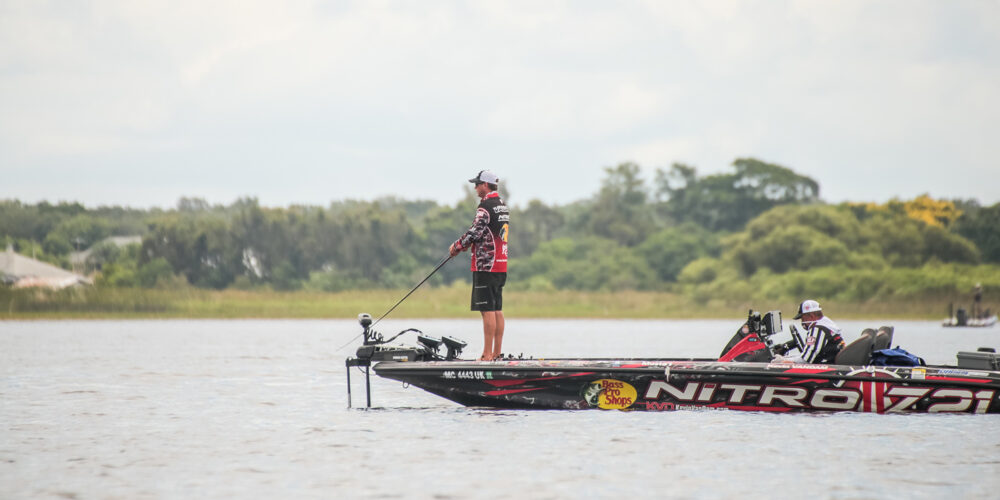In my last blog, I stepped back in time and took a look at how far GPS positioning and digital mapping has come in the last 30 years. This time, I’ll take a trip down memory lane in the sonar department to get some perspective on how much the fish finder game has changed.
As a professional angler, improvements in sonar electronics have always fascinated me. I remember the first depth finder I owned was a Humminbird Super Sixty flasher. It was located on the console of my boat and functioned almost exclusively as just a depth finder. Not long after that, I mounted a second flasher – a Super 30 – in the bow, fastening the transducer to the trolling motor.
The big question back then was, “Do you really need two depth finders in a bass boat?”
The advantage of having a transducer cone looking straight down under the trolling motor was huge, especially on the more “zoomed in” Super 30, where flicks and flashes were even bigger because the scale was cut in half. Now the “depth finder” became more of a “fish finder” in terms of being able to stay right over cover and structure like steep breaks, brushpiles, deep grass or rock. At times you could see bass themselves lighting up the flasher as they passed through the cone. So yes, two depth finders became necessary.
Then paper graphs entered the market, which used a stylus to literally draw detailed pictures of the sonar returns on paper. Paper graphs were large units, like some of our electronics today. So then the question became: “Do you really need three depth finders in your boat?”
Yet, it doesn’t end there. In the mid-1980s the first Liquid Crystal Display or Liquid Crystal Readout (LCD or LCR) units came out. And for a short period of time, you could literally run two flashers, a paper graph, and an LCR unit. So this is not the first time in history pro anglers have run multiple electronic units in their boats.
As the old saying goes, the more things change, the more they stay the same.
Technology Keeps Making Strides
The strides made in sonar technology in the past 15 years have been pretty amazing. In 2005, Humminbird introduced Side Imaging technology, which took fish finding to a whole new level. Instead of seeing just a 10- to 20-foot patch of bottom, right under the boat, you could now see 200 feet out either side of the boat.
Imagine instead of staring at the ground right where your feet are, you now have binoculars to look across a field or valley. Add to that the enhanced detail of Mega Imaging and the underwater world can be viewed with a clarity never seen before.
Sonar advancements, however, do not stop there. Looking ahead into the future of sonar technology requires literally looking forward with sonar technology.
In the last couple of years, the advent of forward-facing sonar has redefined tournament bass fishing. While the previous technologies of 2D sonar and imaging allowed us to see right under and out to the sides of the boat, forward-facing sonar now gives us the ability to see what’s under the water out in front of the boat.
Depending on the brand, several different versions of forward-facing sonar are now on the market, including Mega 360, which can look at all the underwater world for 360 degrees around the boat.
The advantages of being able to see what’s under the water out in front of the boat are numerous. Primarily, being able to make a cast to a target before your boat gets on top of it is a real game changer.
In addition, now you can literally sit and monitor a piece of cover – like a brushpile, a dock or a bridge column – and watch fish swim in, out and around the cover. Now fishing becomes more like hunting from a deer stand, where you line up on a prime piece of cover, watch and wait with your lure in hand to make a cast when a fish swims “into the picture.”
Recently, forward-facing sonar has been dominating tournaments at all levels, especially in the most recent run of smallmouth events this summer. Seeing fish and structure out in front of the boat and casting to them via sonar view has been a new reality in 2020 and I’d be willing to bet it’s not going away any time soon.
From flashers to paper graphs to LCR to underwater imaging to forward-facing sonar – the sonar race is currently in full stride. I never thought I’d see a day when four units would be the norm on pro anglers’ boats, but it’s quickly getting that way. Being on the front lines of the sport, constantly learning how this ever-evolving technology improves the efficiency of fish finding on the water is one of the things I truly enjoy about my job.






Leave A Comment